
Getting Started
After receiving Zepbound (tirzepatide), you can start your weekly Zepbound routine.
Zepbound can be injected at home, with or without food, once a week at any time of the day
Your healthcare provider can help you choose the injection site that is best for you. You or another person can inject the medicine in your stomach or thigh. Another person should give you the injection in the back of your upper arm.
Read the Instructions for Use included with your vial.
Video guide to your Zepbound Vial.
Your weekly Zepbound routine
Getting started with the Zepbound vial
Gather supplies needed to give your injection. In addition to 1 single-dose vial, you will also need:
1 syringe and 1 needle, supplied separately (for example, use a 1 mL syringe and needle as recommended by your healthcare provider)
1 alcohol swab
Gauze
1 sharps container for throwing away used needles and syringes
Injecting Zepbound
Preparing to inject Zepbound:
Please read the full Instructions for Use included with your Zepbound vial.
1. Remove the vial from the refrigerator.
2. Check the vial label to make sure you have the right medicine and dose, and that it has not expired.
3. Make sure the medicine:
is not frozen
is not cloudy
is colorless to slightly yellow
does not have particles
Always use a new syringe and needle for each injection to prevent infections and blocked needles. Do not reuse or share your syringes or needles with other people. You may give other people a serious infection or get a serious infection from them.
Wash your hands with soap and water.
How to use your vial
After you inspect your vials, follow these steps to use Zepbound*:
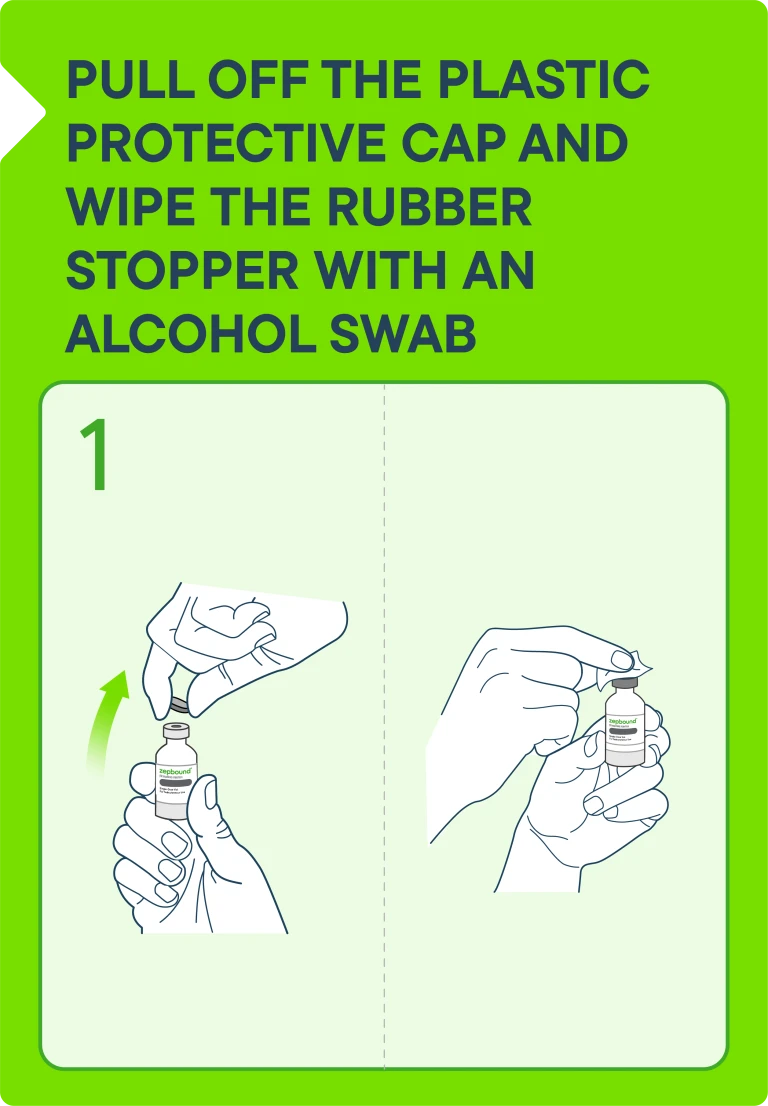

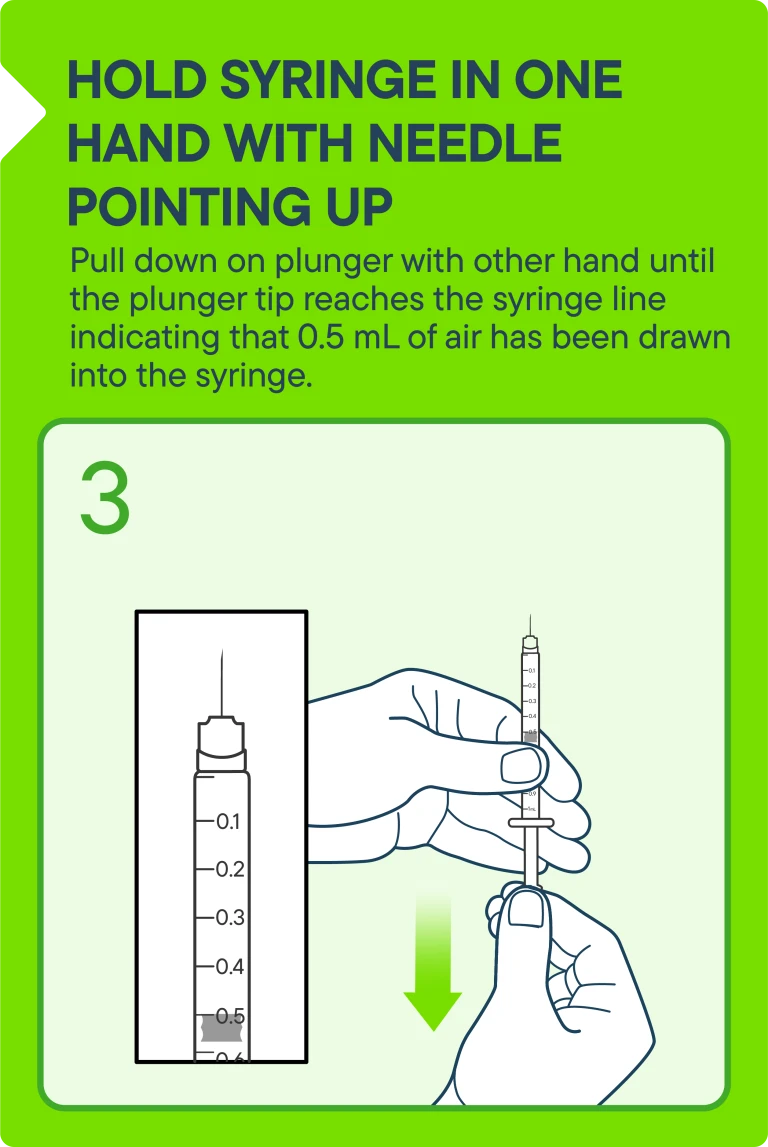
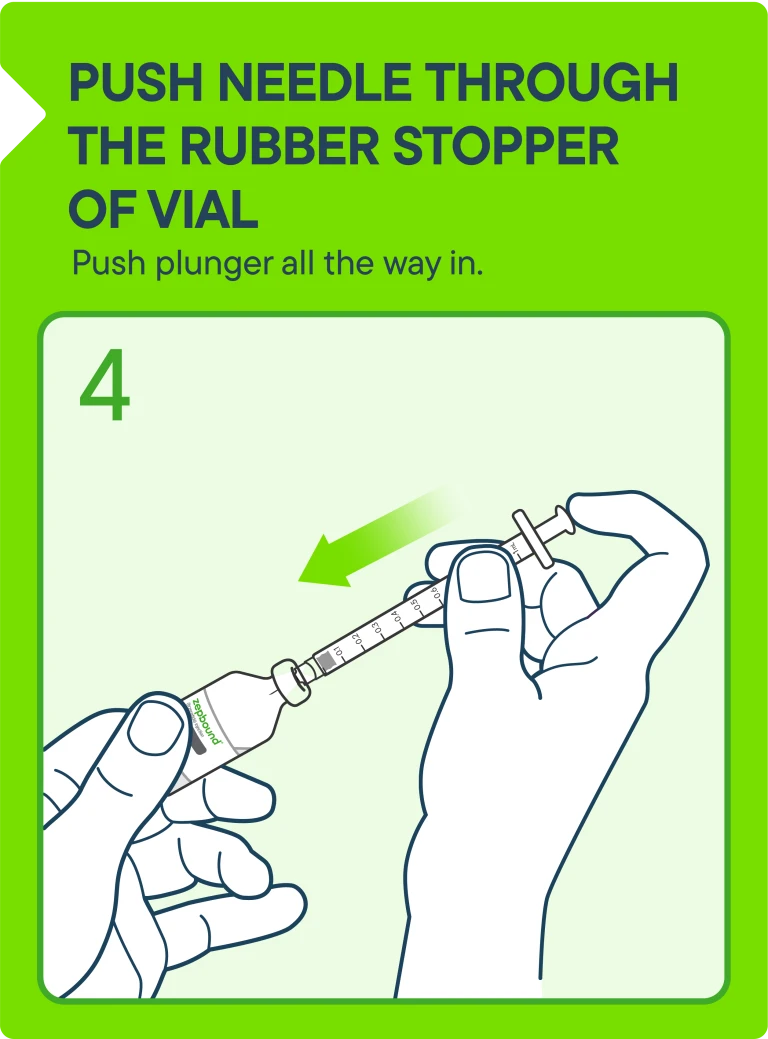
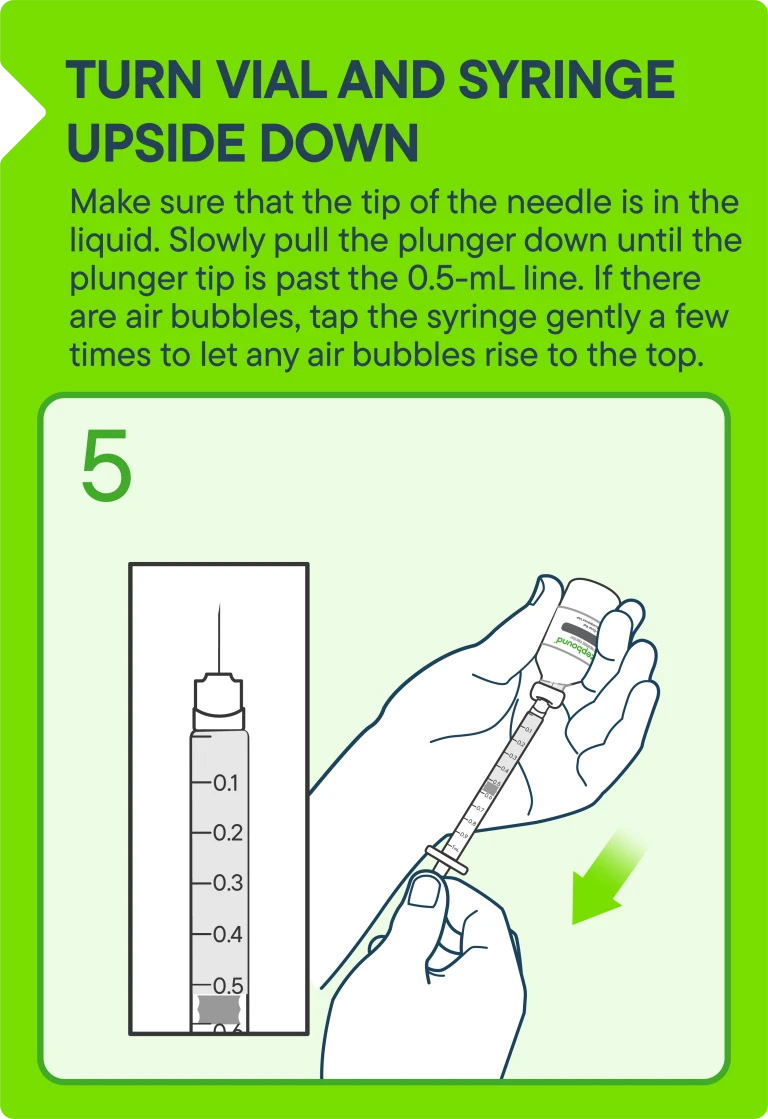
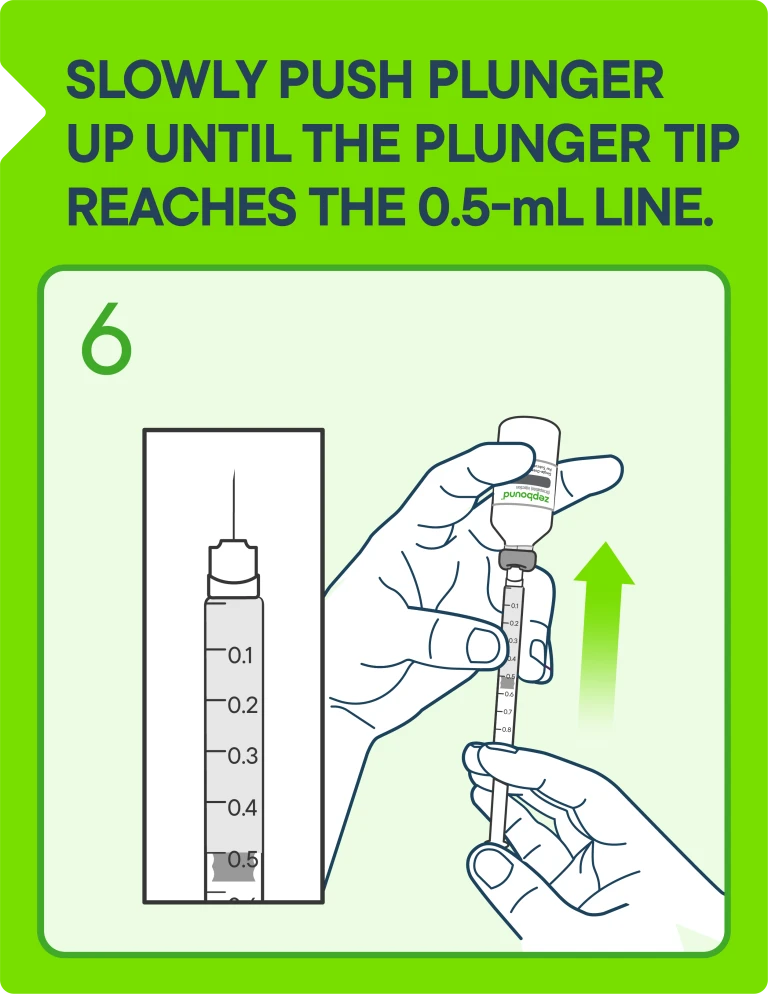
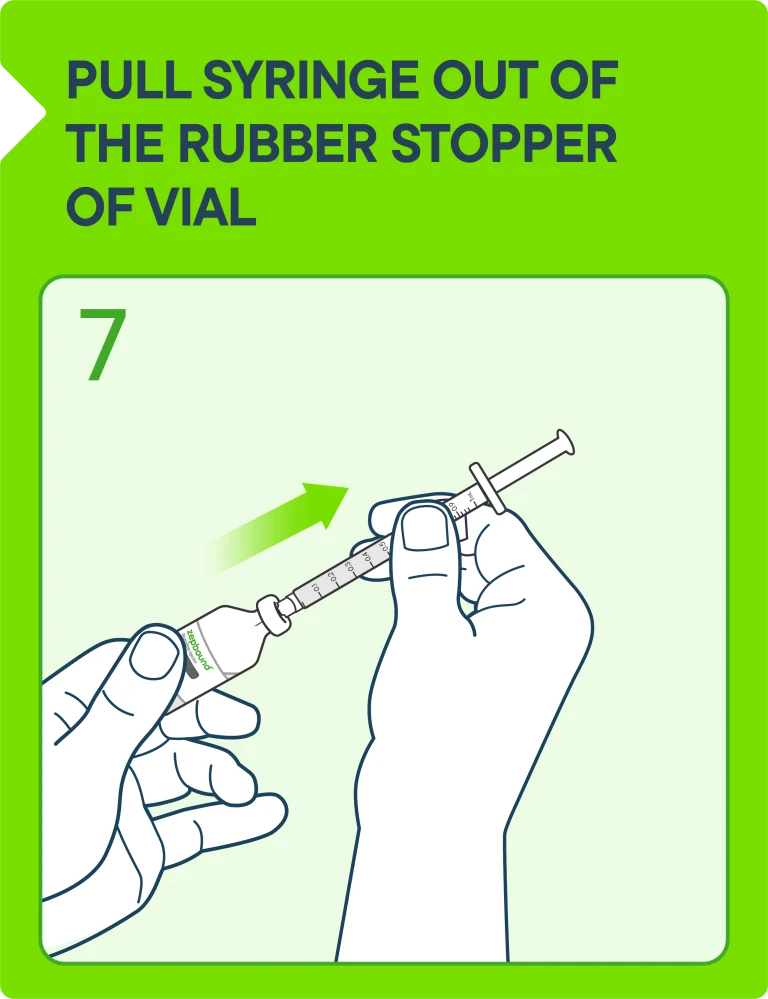
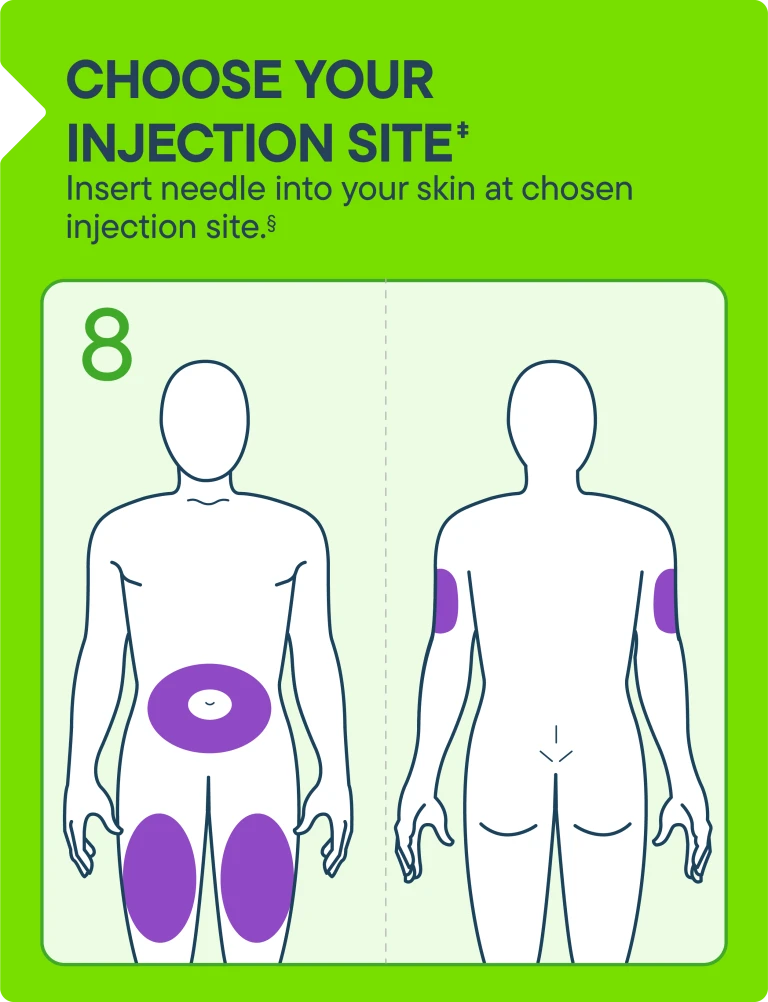
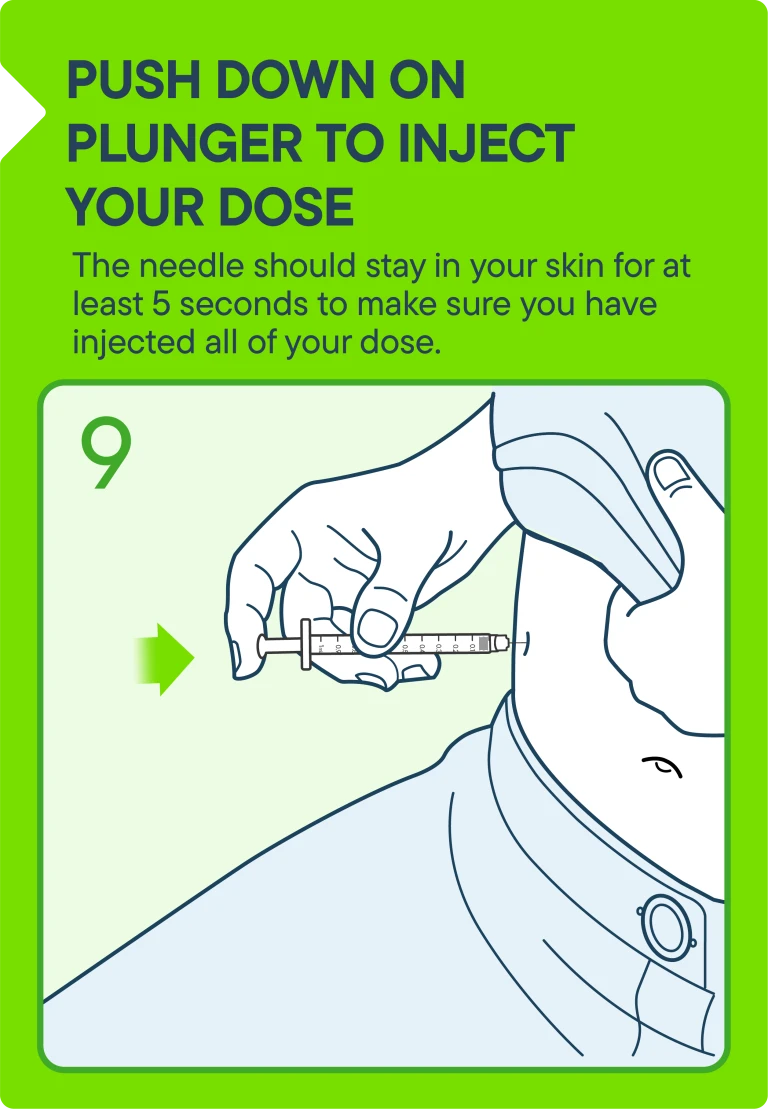
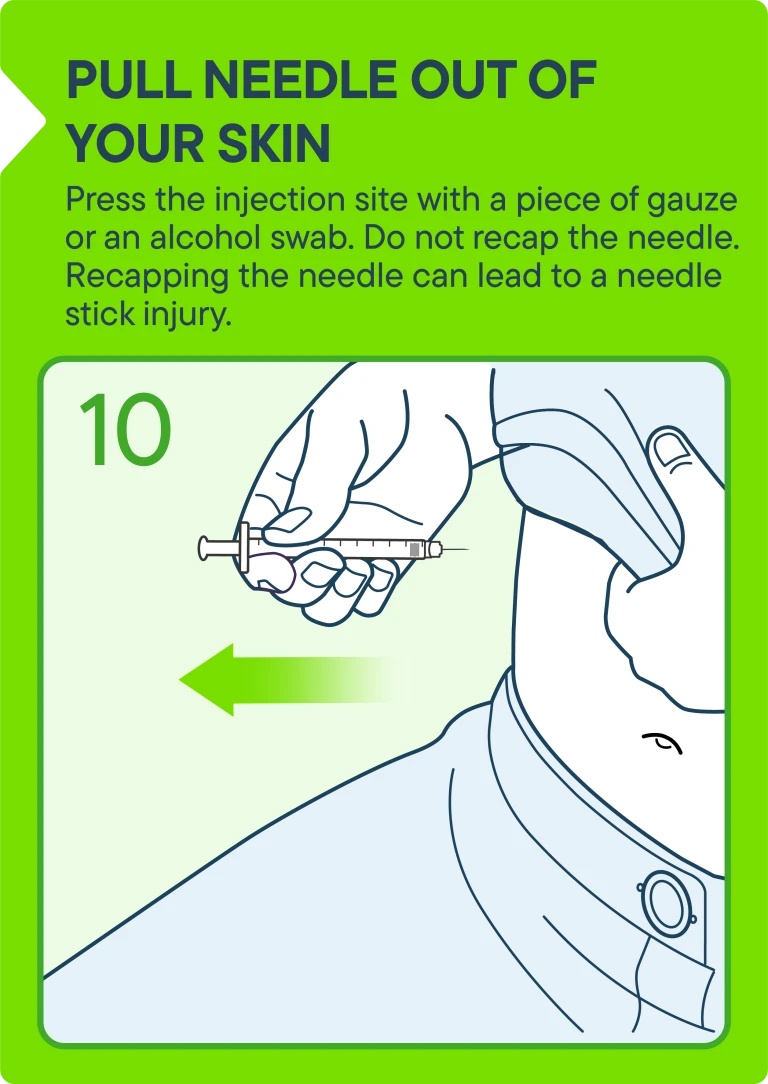
Pull off the plastic protective cap and wipe the rubber stopper with an alcohol swab.
Place needle on top of syringe.ǁ Turn until it’s tight and firmly attached. Remove the needle shield by pulling straight off.
Hold syringe in one hand with needle pointing up. Pull down on plunger with other hand until the plunger tip reaches the syringe line indicating that 0.5 mL of air has been drawn into the syringe.
Push needle through the rubber stopper of vial. Push plunger in all the way in.
Turn vial and syringe upside down. Make sure that the tip of the needle is in the liquid. Slowly pull the plunger down until the plunger tip is past the 0.5 mL line. If there are air bubbles, tap the syringe gently a few times to let any air bubbles rise to the top.
Slowly push plunger up until the plunger tip reaches the 0.5 mL line.
Pull syringe out of the rubber stopper of vial.
Choose your injection site and insert needle into your skin at chosen site.†§
Push down on plunger to inject your dose. The needle should stay in your skin for at least 5 seconds to make sure you have injected all of your dose.
Pull needle out of your skin. Press the injection site with a piece of gauze or an alcohol swab. Do not recap the needle. Recapping the needle can lead to a needle stick injury.
*These 10 steps are not the complete instructions for using Zepbound. Before starting Zepbound, your healthcare provider should show you how to inject Zepbound. Always inspect your medication prior to injection and read the full Instructions for Use included with Zepbound.
† Needle and syringe are not included with Zepbound. The needle and syringe recommended by your healthcare provider may look different than the needle and syringe shown.
ǁ Choose your injection site (for example, your stomach, thigh, or the back of your upper arm). You or another person can inject into your stomach area or thigh. Another person should give you the injection in the back of your upper arm.
§ Change (rotate) your injection site with each weekly injection. You may use the same area of your body but be sure to choose a different injection site in that area. Do not use the same site for each injection.
Life happens and schedules change. So, if you want to change the day of the week you take your Zepbound dose, make sure there are at least 3 days (72 hours) between doses.
If you miss a dose of Zepbound, take it as soon as possible—within 4 days (96 hours) of your scheduled dosing. If more than 4 days have passed, skip the missed dose and take your next dose on your regularly scheduled day. Do not take 2 doses of Zepbound within 3 days (72 hours) of each other.
How to store Zepbound vials
Store all unopened vials in the refrigerator between 36°F to 46°F (2°C to 8°C).
You may store the unopened vials at room temperature up to 86°F (30°C) for up to 21 days. If you store the vials at room temperature, do not return them to the refrigerator.
Discard the vials if not used within 21 days after removing from the refrigerator.
Do not freeze the vials. If the vials have been frozen, throw them away and use new ones.
Store your vials in the original carton to protect them from the light.
Throw away all opened vials after use, even if there is medicine left in the vial.
Keep Zepbound vials, syringes, needles, and all medicines out of the reach of children.
Properly dispose of your used needles and syringes
It is important to dispose of your used Zepbound materials safely. To do this, put your used needle and syringe in an FDA-cleared sharps disposal container right away after use. Do not throw away loose syringes or needles in household trash. If you don't have an FDA-cleared sharps container, use a household container. Make sure it is made of heavy-duty plastic; can be closed with a tight-fitting, puncture-resistant lid, without sharps being able to come out; and it is upright, stable during use, leak-resistant, and properly labeled to warn of hazardous waste.
Keep Zepbound vials, syringes, needles, and all medicines out of the reach of children. Do not recycle your sharps container. Follow your community guidelines for the right way to dispose of your sharps disposal container. For more information about safe sharps disposal, go to the FDA’s website at https://www.fda.gov/safesharpsdisposal.
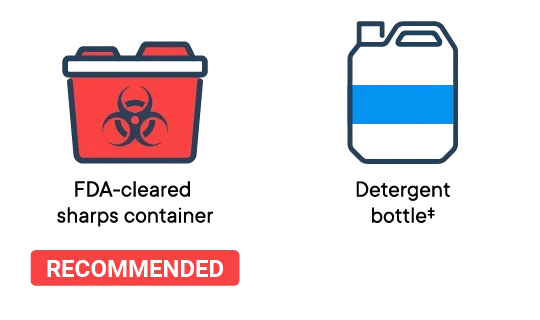
‡Make sure these bottles are cleaned, emptied, and labeled before use.
Zepbound dosing is increased gradually over time
You’ll begin treatment at a recommended 2.5 mg starting dose.a After 4 weeks, your doctor will increase your dose to 5 mg. Your doctor may increase the dosage in 2.5 mg increments after at least 4 weeks on the current dose until recommended maintenance dosage is achieved.b
Keep up with your plan: You’ll work with your doctor to follow this step-by-step dosing process to see what dose works best for you.
The Zepbound single-dose pen is available in the 2.5 mg, 5 mg, 7.5 mg, 10 mg, 12.5 mg, and 15 mg doses.
The Zepbound single-dose vial is available in the 2.5 mg, 5 mg, 7.5 mg, 10 mg, 12.5 mg, and 15 mg doses.
a2.5 mg is a starting dose and is not an approved maintenance dose. The recommended maintenance doses are 5 mg, 10 mg, or 15 mg for weight reduction and long-term maintenance. The recommended maintenance doses are 10 mg or 15 mg for obstructive sleep apnea (OSA).
bThe maximum dose is 15 mg injected under the skin (subcutaneously) once weekly.

Image description:
The starting dose is 2.5 mg once weekly. After 4 weeks, your dose will be increased to 5 mg. Your dose can be increased in 2.5 mg increments after at least 4 weeks on the current dose until recommended maintenance dosage is achieved. The maximum dosage is 15 mg once weekly. The Zepbound single-dose pen is available in the 2.5 mg, 5 mg, 7.5 mg, 10 mg, 12.5 mg, and 15 mg doses. The Zepbound single-dose vial is available in the 2.5 mg, 5 mg, 7.5 mg, 10 mg, 12.5 mg, and 15 mg doses.
Talk to your doctor if you have any side effects that bother you or don't go away
Everyone can have a different experience, but the most common side effects reported by people taking Zepbound were:
Nausea
Diarrhea
Vomiting
Constipation
Stomach (abdominal) pain
Indigestion
Injection site reactions
Fatigue
Allergic reactions
Belching
Hair loss
Heartburn
In studies, most nausea, diarrhea, and vomiting occurred when people increased their dose—but the effects gradually decreased over time.
In studies, gastrointestinal (GI) side effects were more common in people taking Zepbound than people taking placebo, and people taking Zepbound were more likely to stop treatment because of these side effects.
Select Safety Information
Zepbound can cause serious side effects, including:
Severe stomach problems. Stomach problems, sometimes severe, have been reported in people who use Zepbound. Tell your healthcare provider if you have stomach problems that are severe or will not go away.
Dehydration leading to kidney problems. Diarrhea, nausea, and vomiting may cause a loss of fluids (dehydration), which may cause kidney problems. It is important for you to drink fluids to help reduce your chance of dehydration.
Tips that may help with nausea
If you experience nausea, talk to your doctor. In the meantime, it may help to:
Eat smaller meals—try splitting 3 daily meals into 4 or more smaller ones
Stop eating when you feel full
Avoid fatty foods like butter or cheese
Try eating bland foods like toast, crackers, or rice